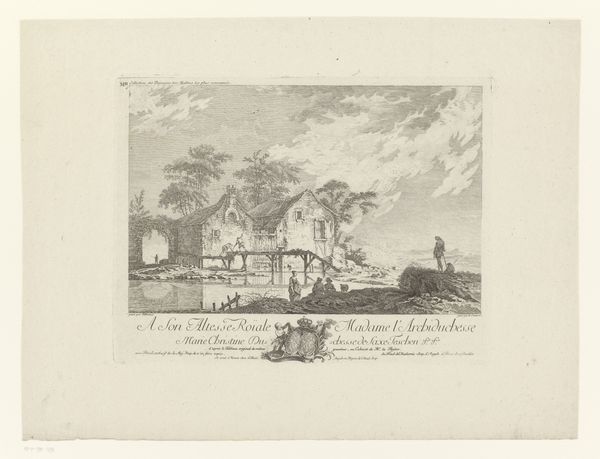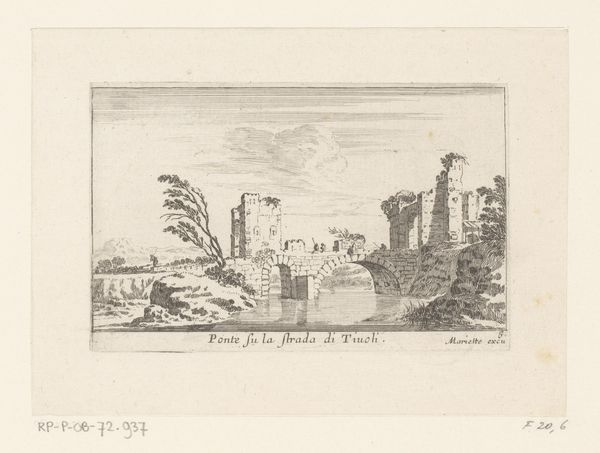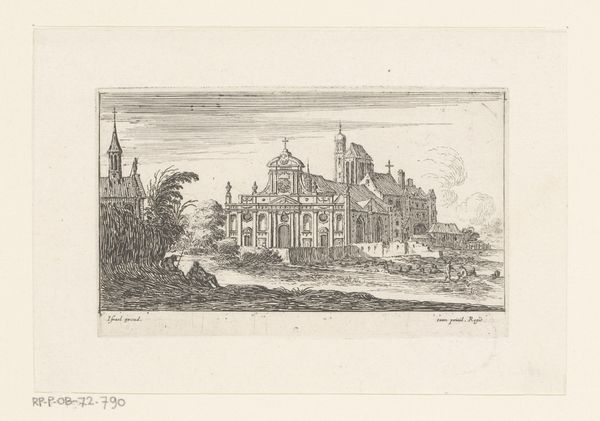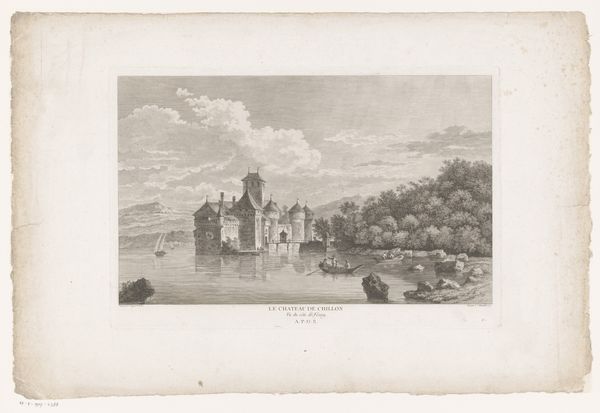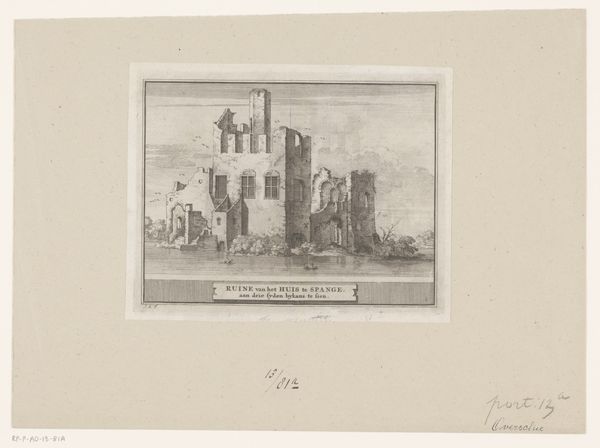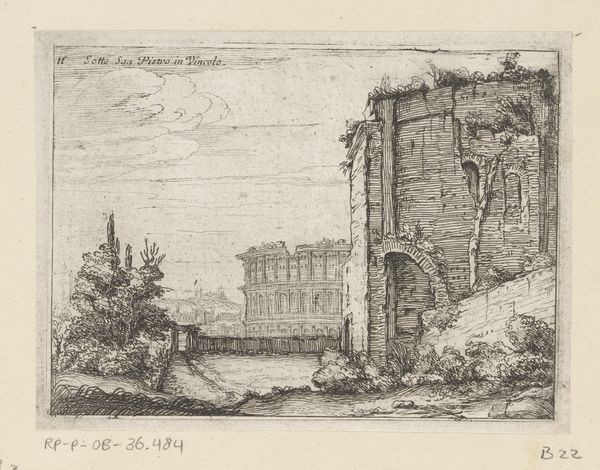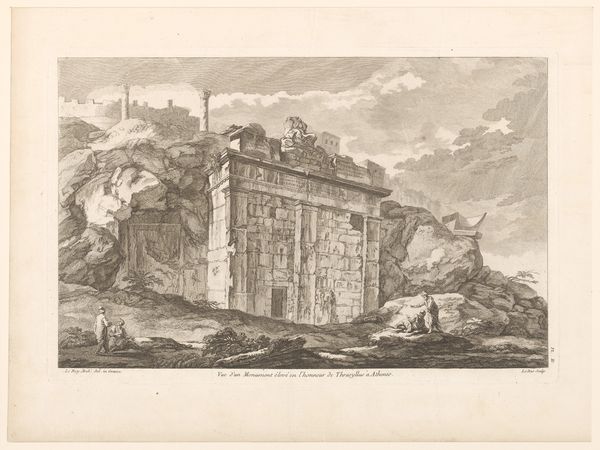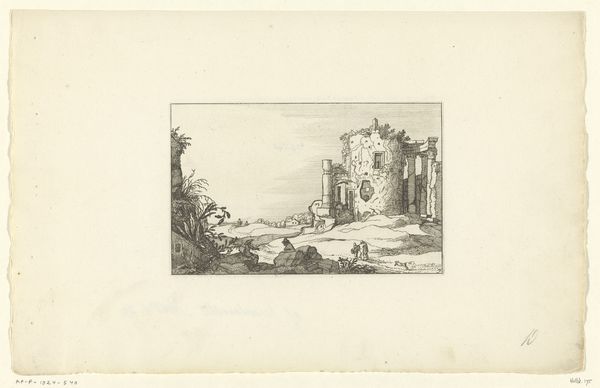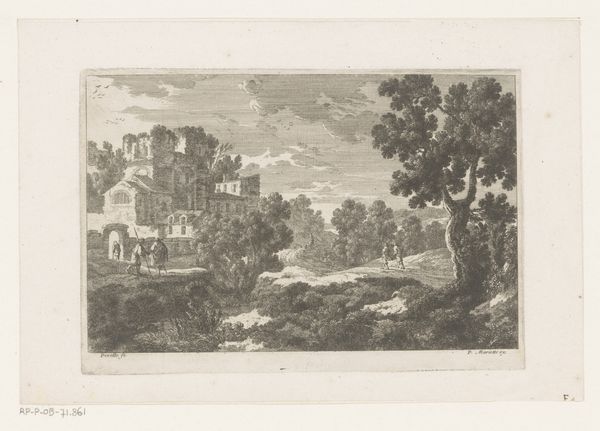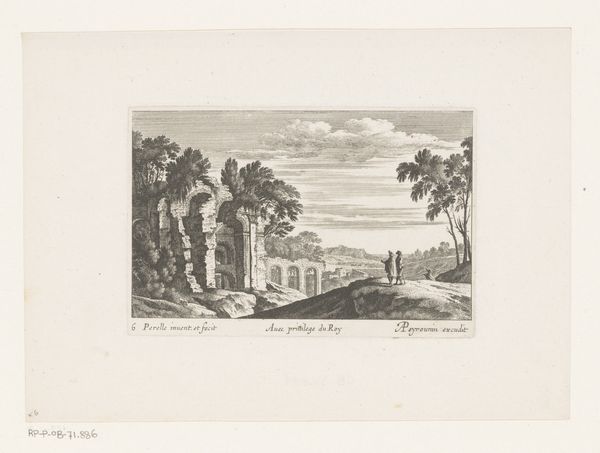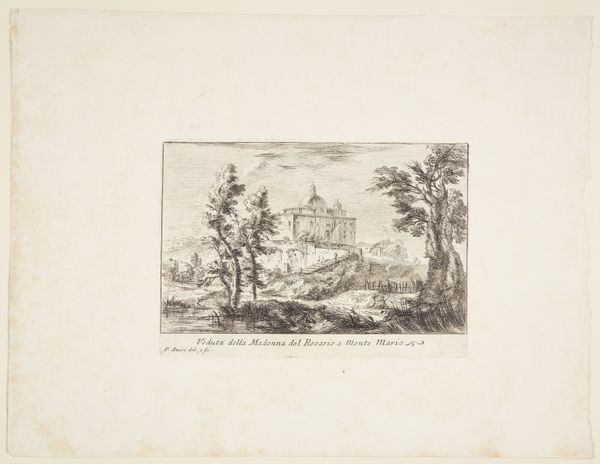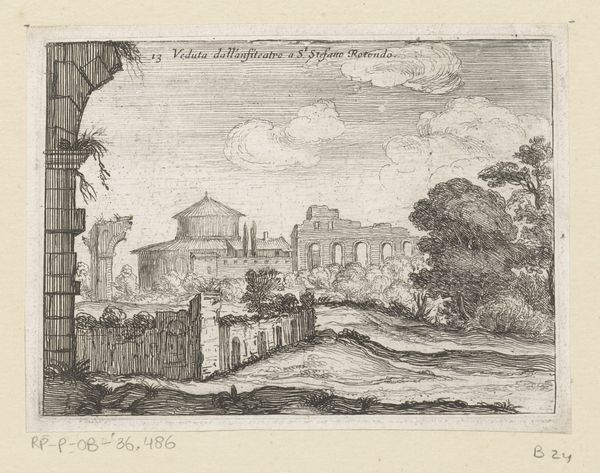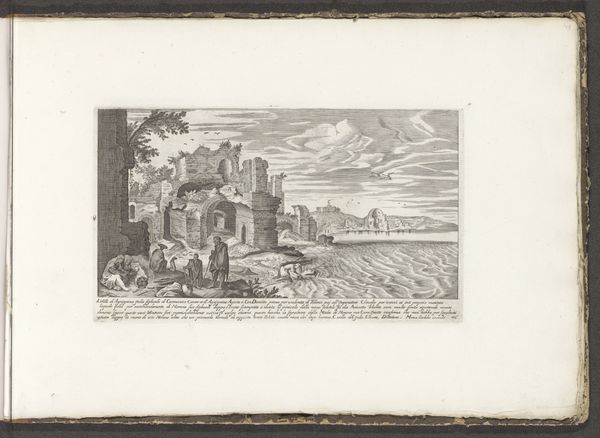
Ander gezicht op het kasteel van Bourbon l'Archambault 1631 - 1657
0:00
0:00
israelsilvestre
Rijksmuseum
print, engraving
#
baroque
# print
#
old engraving style
#
landscape
#
cityscape
#
history-painting
#
engraving
Dimensions: height 71 mm, width 122 mm
Copyright: Rijks Museum: Open Domain
Curator: Looking at this work by Israel Silvestre, made sometime between 1631 and 1657, titled "Another View of the Castle of Bourbon l'Archambault", what are your initial thoughts? Editor: Well, right away, there’s a haunting stillness, like the scene from some long-forgotten ballad. The architectural ruins set against those enormous cloud formations certainly give it an unsettling feel. What strikes you most? Curator: It’s primarily the compositional strategies Silvestre employs to guide the eye. Notice the sharp contrast between the precise architectural rendering and the more loosely defined natural elements. The structure in the foreground is framing everything. Editor: Mmm, yes, the architectural rendering IS incredibly detailed. To me, it feels less like documenting architecture and more like evoking a sense of history weighing on the present. And that history… It seems troubled. What exactly WAS Bourbon l’Archambault back then? Curator: Bourbon l'Archambault, at the time, was a prominent stronghold, and this engraving showcases Silvestre's attention to the geometrical organization inherent in Baroque landscapes, emphasizing a calculated pictorial space, but even I have to admit it evokes something beyond strict representation. Editor: Agreed. It’s as if he’s suggesting that even the mightiest structures eventually crumble. And those clouds… they look ready to swallow everything. The almost ghostly shapes floating in the sky are oddly reminiscent of faces. Curator: Faces, perhaps suggesting figures related to its rich history... Interesting idea. Formally, the balance he achieves is noteworthy given the subject matter; the line work is exceptionally clean for the period, and contributes to the overall impression of a carefully constructed reality, even though we're viewing something in decay. Editor: That “constructed reality” is perhaps what makes it so poignant for me. The decay isn’t just physical; it's as if he captured the crumbling of an idea, a kingdom perhaps, which somehow amplifies the solitude within this grand vista. The two figures present in the bottom right certainly seems dwarfed and pensive, maybe even forlorn? Curator: An astute interpretation. Looking closer reveals new aspects of its construction, it's so much more than just another picture. Editor: I agree!
Comments
No comments
Be the first to comment and join the conversation on the ultimate creative platform.
